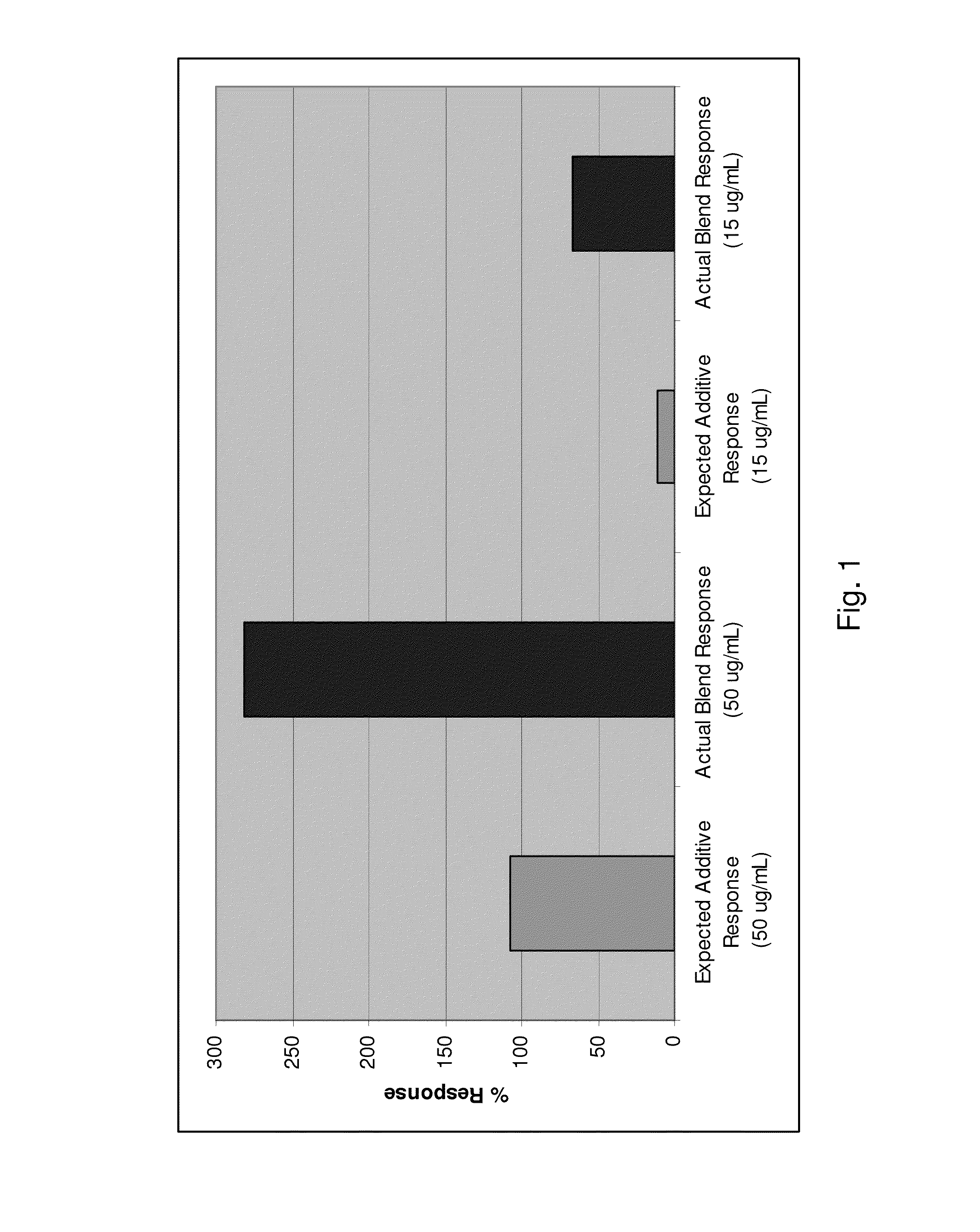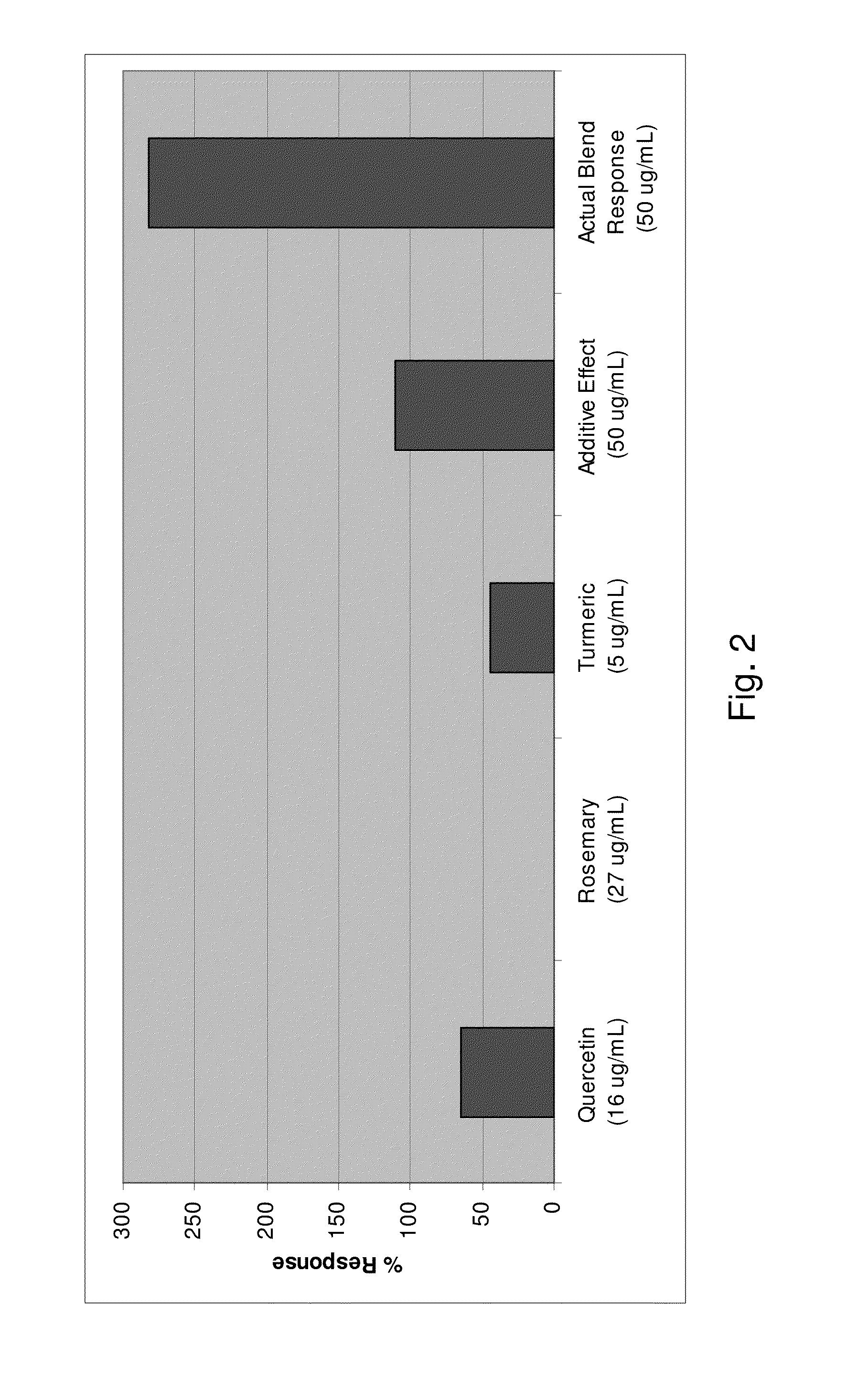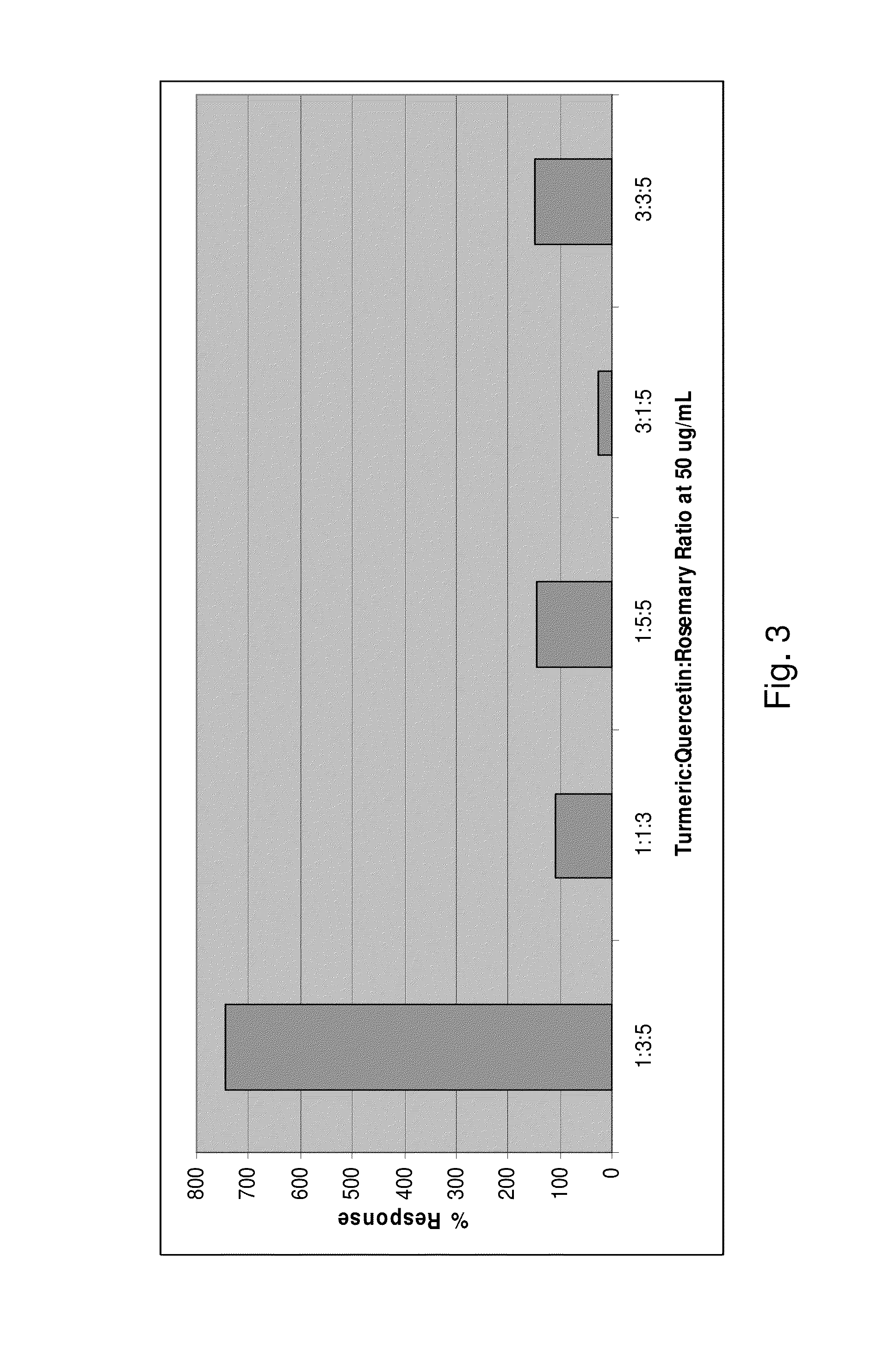Antioxidant dietary supplement and related method
a technology of dietary supplements and antioxidants, applied in the field of antioxidant dietary supplements and related methods, to achieve the effect of convenient administration
- Summary
- Abstract
- Description
- Claims
- Application Information
AI Technical Summary
Benefits of technology
Problems solved by technology
Method used
Image
Examples
example 1
[0043]The formulation including the blend of turmeric, quercetin and rosemary (TQR Blend, also referred to herein as Blend A) was tested to evaluate the ARE of the blend. In particular, the three individual ingredients, turmeric, quercetin and rosemary were tested by themselves and in combination as a blend. In the testing, a conventional assay for determining ARE was utilized. Generally, the assay included the human hepatocyte cell line HepG2 obtained from ATCC of Manassas, Va. that was stably transfected with a vector. The vector contained four repeats of the ARE DNA sequence (5′-GTGACTCAGCA-3′) upstream of a minimal promoter using the firefly luciferase gene as a reporter. These cells were then treated with the individual ingredients turmeric, quercetin and rosemary, and the TQR Blend in varying concentrations for 48 hours in this and the other noted examples below. The human hepatocytes were lysed, the luciferase substrate, purchased from Biotium of Hayward, Calif., added, and t...
example 2
[0046]The formulation including the blend of turmeric, quercetin and rosemary, that is, the TQR Blend (Blend A), was tested to identify and discover a synergistic ratio of the ingredients. In particular, multiple ratios of turmeric:quercetin:rosemary were tested on the ARE assay of Example 1 to determine the most synergistic combination. All blends were tested at a concentration of 50 μg / mL. As shown in FIG. 3, it was discovered that the most synergistic ratio tested in the TQR Blend included turmeric, quercetin and rosemary at a ratio of 1:3:5. This was unexpected, as it previously appeared that the higher relative level of turmeric in the ratio should improve the overall synergy, but for some reason, the lower relative level of turmeric enhanced the synergy, perhaps because the turmeric may have been toxic for cells in culture at concentrations higher than 10-20 μg / ml.
example 3
[0047]The formulation including the blend of turmeric, quercetin and rosemary, that is, the TQR Blend (Blend A), was further tested to evaluate and verify the synergistic ratio of 1:3:5 at different concentrations of the ingredients. In particular, as shown in FIG. 4, varying concentrations in μg / ml of each of the individual ingredients of turmeric, quercetin and rosemary were tested in the ARE assay and compared to the corresponding concentrations in μg / ml of the TQR Blend with the ingredients at the 1:3:5 ratio at the different TQR concentrations. As a result of the testing, it was observed that when the TQR Blend had a concentration of 50 μg / ml at the 1:3:5 ratio of the turmeric, quercetin and rosemary, that TQR Blend had a % Response in the ARE assay that was at least 1, 2, 3, 4, 5, 6, 7, or 8 times greater than the corresponding % Response of any one of the turmeric, quercetin and rosemary individually at the noted concentrations. For example, quercetin exhibited about 50% Resp...
PUM
| Property | Measurement | Unit |
|---|---|---|
| Mass | aaaaa | aaaaa |
| Mass | aaaaa | aaaaa |
| Mass | aaaaa | aaaaa |
Abstract
Description
Claims
Application Information
 Login to View More
Login to View More - R&D
- Intellectual Property
- Life Sciences
- Materials
- Tech Scout
- Unparalleled Data Quality
- Higher Quality Content
- 60% Fewer Hallucinations
Browse by: Latest US Patents, China's latest patents, Technical Efficacy Thesaurus, Application Domain, Technology Topic, Popular Technical Reports.
© 2025 PatSnap. All rights reserved.Legal|Privacy policy|Modern Slavery Act Transparency Statement|Sitemap|About US| Contact US: help@patsnap.com



